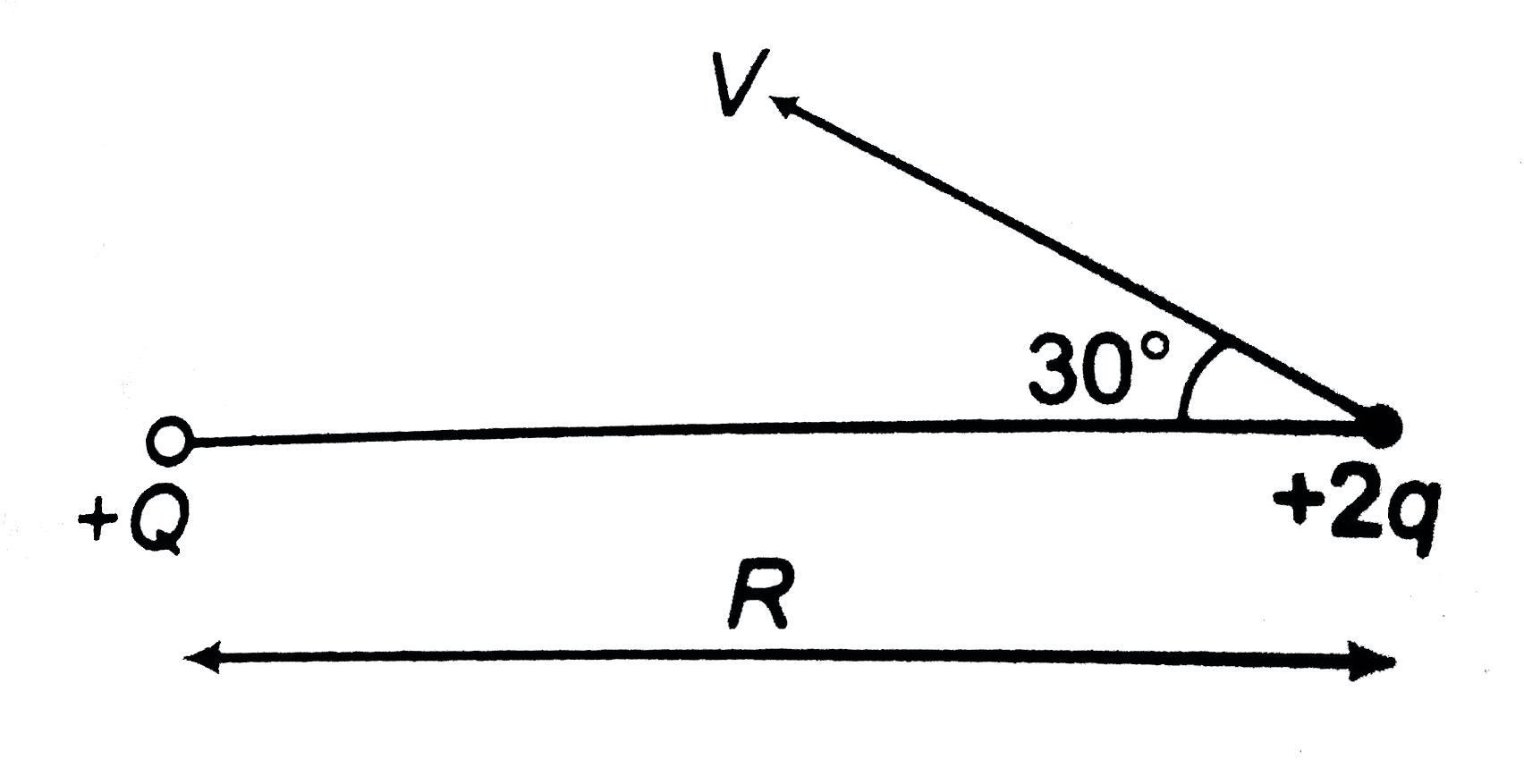A charge 'q'is held at rest at a point. Another identical charge of mass 'm' is projected towards this charge from infinity with a velocity 'V'. What is the shortest distance between these charges.Solution in Telugu
The correct Answer is:d=14π∈02q2mv2
Step by step video, text & image solution for A charge 'q'is held at rest at a point. Another identical charge of mass 'm' is projected towards this charge from infinity with a velocity 'V'. What is the shortest distance between these charges. by Physics experts to help you in doubts & scoring excellent marks in Class 12 exams.
Updated on:21/07/2023Topper's Solved these Questions
- ELECTRIC FIELD AND POTENTIALBook:AAKASH SERIESChapter:ELECTRIC FIELD AND POTENTIALExercise:PROBLEMS (LEVEL-II)
Explore 32 Videos
- ELECTRIC FIELD AND POTENTIALBook:AAKASH SERIESChapter:ELECTRIC FIELD AND POTENTIALExercise:EXERCISE (VERY SHORT ANSWER QUESTIONS)
Explore 23 Videos
- ELECTRIC CHARGES AND FIELDSBook:AAKASH SERIESChapter:ELECTRIC CHARGES AND FIELDSExercise:Practice Exercise
Explore 57 Videos
- ELECTROMAGNETIC INDUCTIONBook:AAKASH SERIESChapter:ELECTROMAGNETIC INDUCTIONExercise:Additional Exercise
Explore 10 Videos
Similar Questions
A metal sphere with its centre at A and radius R has a charge 2q on it. The field at a point B outside the sphere is E. If another metal sphere of radius 3R and having a charge -3q is placed with its centre at point B, find out the resultant electric field at a point mid way between A and B.
View SolutionUsually it is the negative charge that is transferred when two bodies are rubbed together. Can you explain. Why?
View SolutionWat is the charge acquired by a body when one million electrons are transferred to it.
View SolutionConsider Experiment II in Section 6.2.
a. What would you do to obtain a large deflection of the galvanometer?
b. How would you demonstrate the presence of an induced current in the absence of a galvanometer?
View SolutionIn the diagram shown the charge +Q is fixed. Another charge +2q and mass M is projected from a distance R from the fixed charge. Minimum separtion between the two charge if the velocity becomes 1√3 time of the projected velocity, at this moment is (Assume gravity to be absent)

View SolutionA particle of mass m carrying charge q is projected with velocity v from point P toward aninfinite line of charge from a distance a . Its speed reduces to zero momentarily at point Q, which is at a distance a/2 from the line of charge. If another particle with mass m and charge −q is projected with the same velosity v from P toward the line of charge, what will be its speed at Q ?
View SolutionA charge q of mass m is projected form a long distance with speed v towards another stationery particle of same mass and charge the distance of closet approach of the particles is
View SolutionTwo particles each charged with a charge +q are clamped on they axis at the points (0, a) and (0, - a). If a positively charged particle of charge q0 and mass m is slightly displaced from origin in the direction ofnegativex-axis.
(a) What will be its speed at infinity?
(b) If the particle is projected towards the left along the x-axis from a point at a large distance on the right of the origin with a velocity half that acquired in part (a), at what distance from origin will it come to rest ?
[√2Kqq0ma,√15a]
View SolutionA charge particle of mass m and charge q is released from rest in uniform electric field. Its graph between velocity (v) and distance travelled (x) will be :
View SolutionA charged particle q is thrown with a velocity v towards another charged particle Q at rest. It approaches Q up to a closest distance r and then returns. If q is thrown with a velocity 2v, what should be the closest distance of approach?
View SolutionA positive point charge is released from rest at a distance r0 from a positive line charge with uniform density. The speed (v) of the point charge, as a function of instantaneous distance r from line charge, is proportional to:

View SolutionA charge "Q" of mass "m" is at rest on a smooth horizontal plane.Another identical particle is projected with a velocity v towards it from long distance then
View SolutionA charged particle of mass m and charge q is kept initially at rest on a frictionless surface. Another charged particle of mass 4m and charge 2q starts moving with velocity v towards it. Calculate the distance of the closest approach for both the charged particles.
View SolutionThe velocity acquired by a charged particle of mass m and charge Q accelerated from rest by a potential of V is
View SolutionAssume that a point charge q is projected from a large distance toward the center of a fixed charged ring along its axis. What should be its initial velocity so that the charge may reach the other side of infinity?
View Solution

